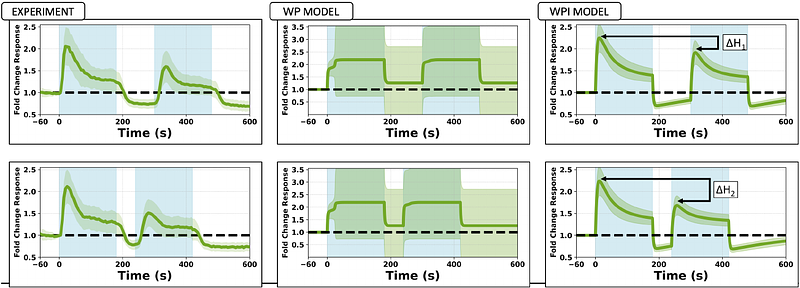Investigating Local Negative Feedback of Rac Activity by Mathematical Models and Cell Motility Simulations

Investigating Local Negative Feedback of Rac Activity by Mathematical Models and Cell Motility Simulations
Algorta, J.; Town, J. P.; Weiner, O.; Edelstein-Keshet, L.
AbstractFor polarization and directed migration, cells use a combination of local positive feedback and long-range inhibition. We have previously used mathematical models to show the ability of this core circuit to regulate directed cell movement. However, this wave pinning model lacks important additional feedback circuits, including the recently demonstrated local negative feedback from Town and Weiner. Here we extend our models to investigate the consequences of this additional link on cell physiology. We model responses of neutrophil-like HL-60 cells to spatially-controlled optogenetic stimulation of PI3K, leading (via PIP3) to Rac activity. We sequentially build up and investigate partial differential equation (PDE) models of the key Rac, Rac-Inhibitor, and PIP3-Rac-Inhibitor circuits. We fit model parameters to temporal and spatial (cell trajectory) data. Cell shapes, motility, and responses to stimuli are modeled in 2D cell-based simulations, with PDEs for Rac and the other regulatory components solved along the cell edge. We demonstrate that the ability of modeled cells to respond to temporal as well as spatial features of guidance cues depends on the addition of the local negative feedback circuit. Furthermore, the local Rac inhibitor improves the ability of modeled cells to respond to noisy or dynamic extracellular gradients. Our work demonstrates how local negative feedback enhances dynamic polarity and gradient sensing in migratory cells.